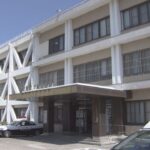Prime Minister Ishiba spoke by phone with Professor Shimon Sakaguchi of Osaka University, who was selected for this year’s Nobel Prize in Physiology or Medicine, praising his work as “outstanding research that the world can be proud of” and conveying his congratulations.
Prime Minister Ishiba:
“This makes you the 29th Japanese individual to receive this honor. This is truly outstanding research that the world can be proud of. Thank you very much. Congratulations.”
Professor Shimon Sakaguchi of Osaka University:
“Thank you. In a way, I believe my persistent work has led to this day.”
Professor Sakaguchi, who was selected for the Nobel Prize in Physiology or Medicine, specializes in immunology and discovered cells called “regulatory T cells” that suppress excessive immune responses.
The “regulatory T cells” discovered by Professor Sakaguchi work to prevent autoimmune diseases. Conversely, it has been found that removing these “regulatory T cells” can be effective in cancer immunotherapy, and their application is expected in treatments for allergies and cancer.
When Professor Sakaguchi expressed his intention to continue research and “work toward developing an ideal treatment for cancer,” Prime Minister Ishiba asked, “How many years until we reach that dream-like era?” Professor Sakaguchi responded, “I believe we can reach that point within about 20 years. I’m certain we will enter an era where cancer is not a scary disease at all, but something that can be cured.”
This marks the sixth Japanese recipient of the Nobel Prize in Physiology or Medicine since 2018.
Nobel Prize
The Nobel Prize is an international award established by the will of Alfred Nobel, the Swedish inventor of dynamite, in 1895. It is awarded annually in the fields of Physics, Chemistry, Physiology or Medicine, Literature, Peace, and Economic Sciences to individuals and organizations who have conferred the greatest benefit to humankind.
Osaka University
Osaka University is one of Japan’s leading national universities, founded in 1931 as the sixth Imperial University. It has since expanded through mergers, including with Osaka University of Foreign Studies, and is renowned for its research in science, technology, and medicine.
Physiology or Medicine
“Physiology or Medicine” is not a physical place but a Nobel Prize category, first awarded in 1901. It is presented annually by the Nobel Assembly at the Karolinska Institute in Sweden to honor significant discoveries in the fields of life sciences and medicine. The prize has recognized groundbreaking medical advances, such as the discovery of penicillin and the structure of DNA.
regulatory T cells
Regulatory T cells (Tregs) are a specialized subset of white blood cells that play a critical role in suppressing immune responses and maintaining self-tolerance. They were first identified in the 1990s and are essential for preventing autoimmune diseases and controlling excessive inflammation. Their discovery has been fundamental to understanding immune system regulation and developing new therapeutic approaches.
autoimmune diseases
“Autoimmune diseases” are not a place or cultural site, but a category of medical conditions. They occur when the body’s immune system mistakenly attacks its own healthy cells and tissues. The history of understanding these diseases is relatively modern, with the concept of “horror autotoxicus” (the fear of self-toxicity) being proposed in the early 20th century, leading to the identification of specific conditions like lupus and rheumatoid arthritis.
cancer immunotherapy
Cancer immunotherapy is a medical treatment approach that harnesses the body’s immune system to fight cancer. Its origins trace back to the late 19th century with William Coley’s early experiments, but the field was revolutionized in the late 20th and early 21st centuries with the development of checkpoint inhibitors and CAR-T cell therapies. These modern breakthroughs have transformed cancer treatment for several types of the disease, offering durable remissions where few options previously existed.
allergies
Allergies are not a physical place or cultural site, but a medical condition involving the immune system’s overreaction to typically harmless substances. The concept has been recognized since ancient times, but the term “allergy” was coined in 1906 by Austrian pediatrician Clemens von Pirquet. Modern understanding of allergies has evolved significantly with the identification of immunoglobulin E (IgE) in the 1960s, leading to improved diagnostics and treatments.
cancer
“Cancer” is not a place or cultural site; it is a term for a group of diseases characterized by the uncontrolled growth and spread of abnormal cells. Historically, evidence of cancer has been found in human and animal fossils, with the earliest known descriptions dating back to ancient Egypt around 3000 BC. The understanding and treatment of cancer have evolved significantly, from early surgical attempts to modern therapies like radiation, chemotherapy, and immunotherapy.






